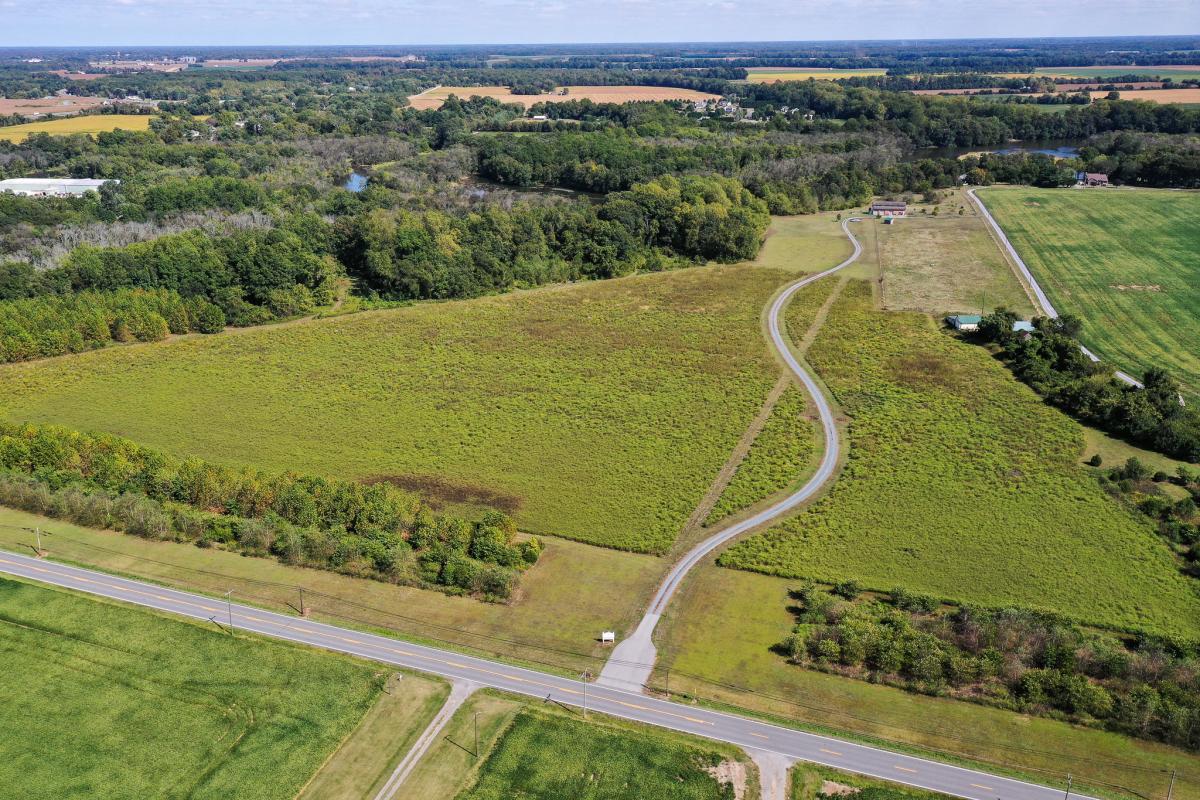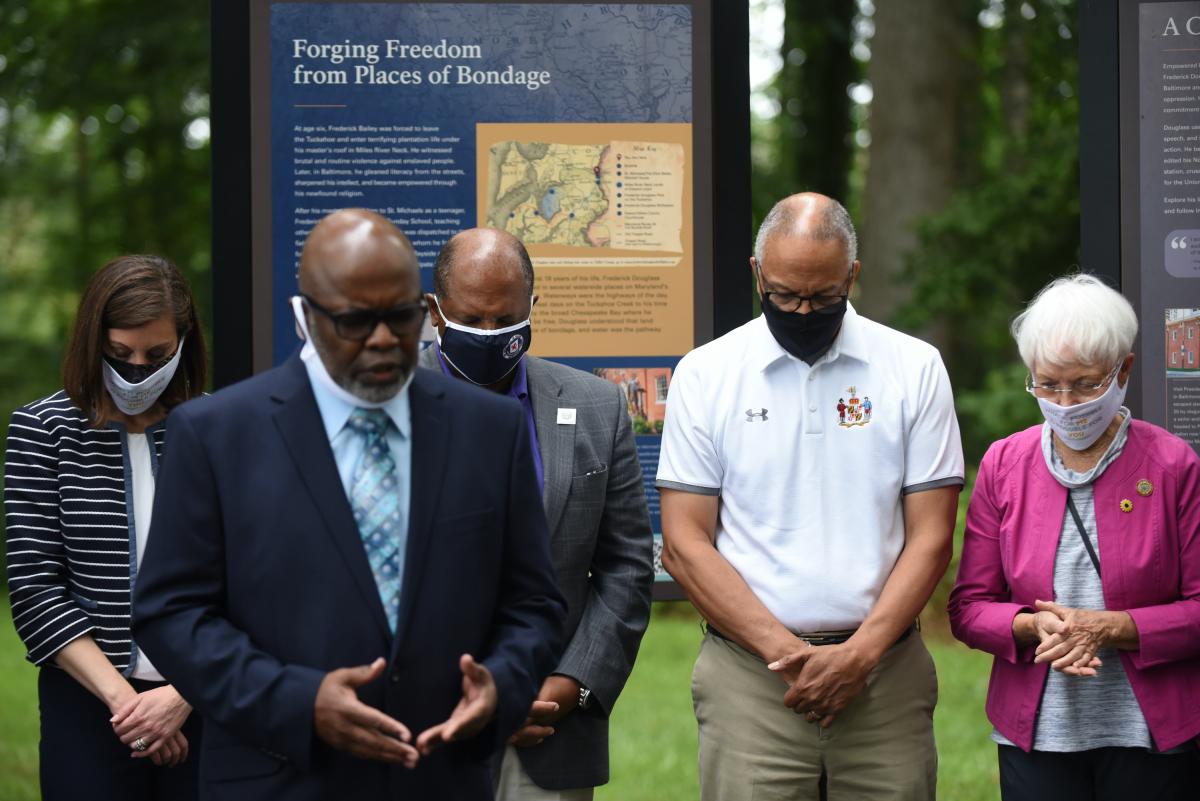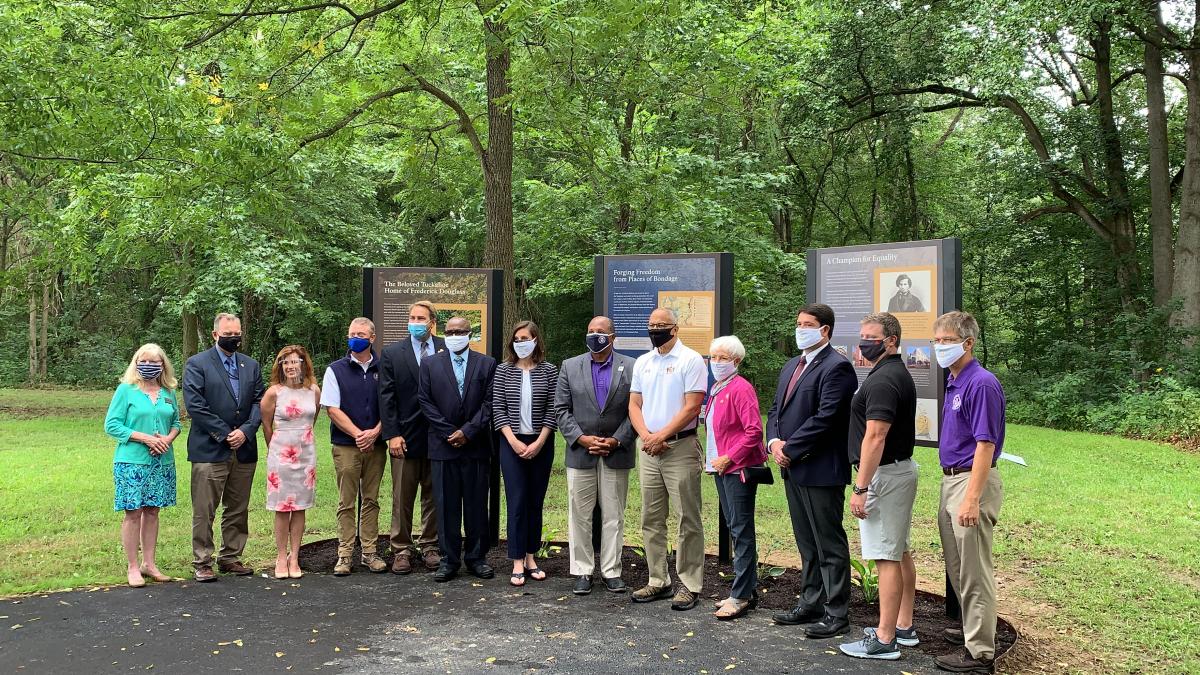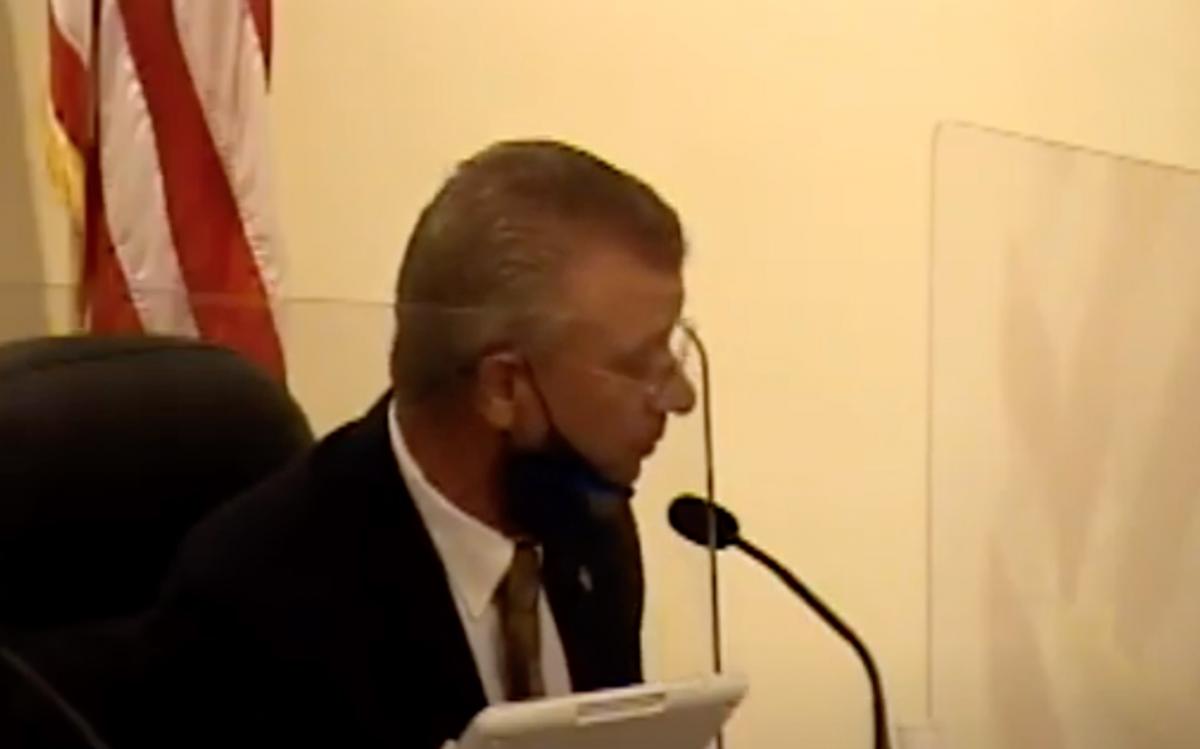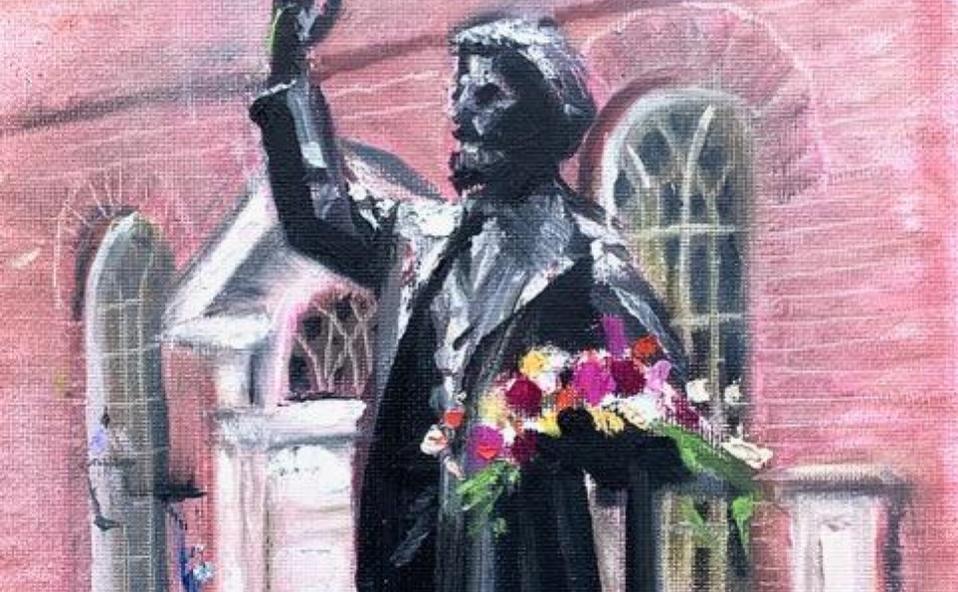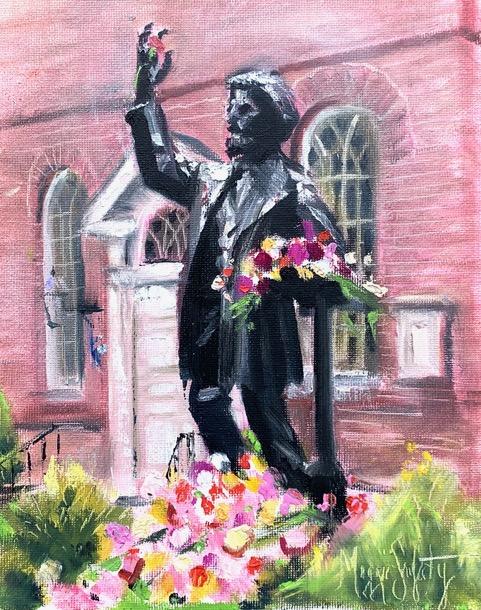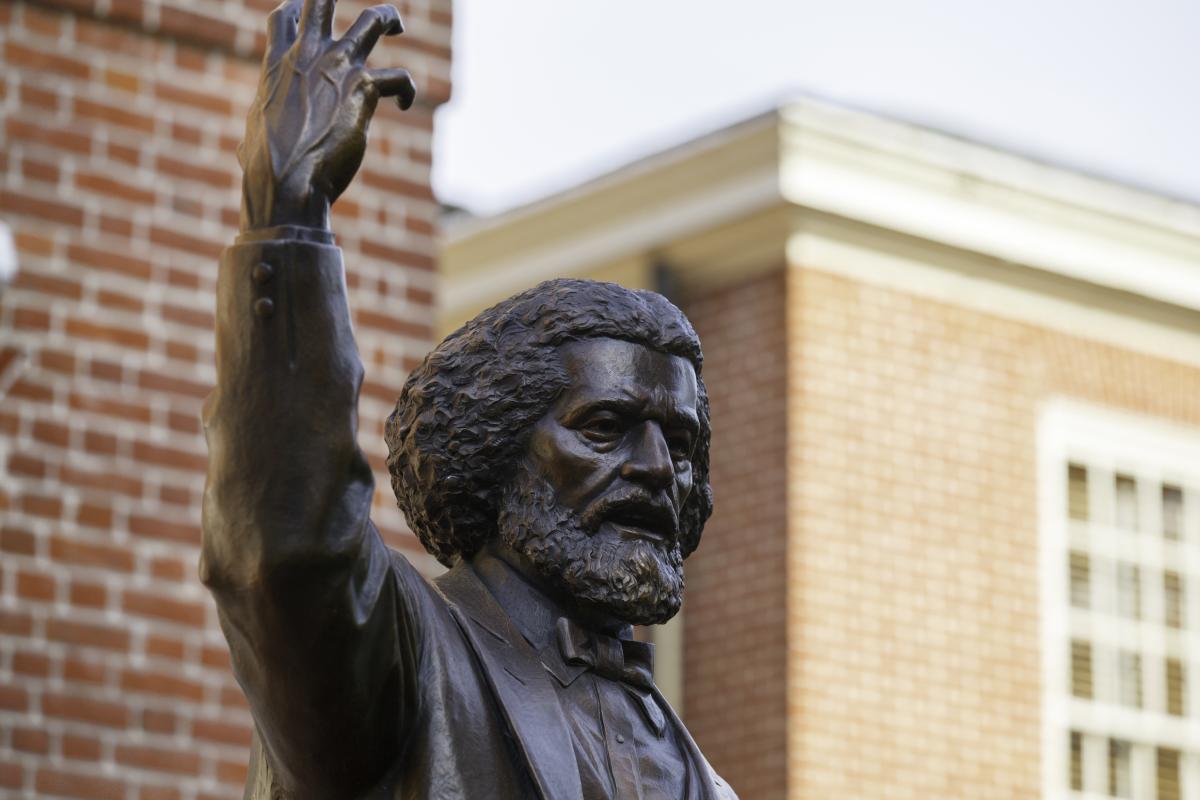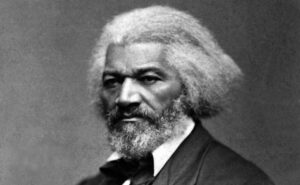The Frederick Douglass Honor Society is pleased to announce their annual community reading of Frederick Douglass’s historic address “What to the Slave is the Fourth of July?” on Saturday, July 9, starting at 11 a.m. in front the Talbot County Court House, 11 North Washington Street, Easton, Maryland.
Frederick Douglass was thirty-four years old when he delivered this riveting and concise speech at the newly constructed Corinthian Hall in Rochester, New York. On July 5, he stood in front of six hundred abolitionists, all invited by the Rochester Ladies’ Anti-Slavery Society, in 1852, nine years before the start of the Civil War.
“What to the Slave is the Fourth of July?” was written at a point in time when the country was strongly debating the matters of slavery. Throughout Frederick Douglass’s speech he spoke about the contradictions between the reality of slavery and the contentions of a just society defined in the Declaration of Independence and the Constitution. Just one day following the country’s celebration of freedom, Douglass implored his audience to contemplate the endless oppression of the enslaved.
“The rich inheritance of justice, liberty, prosperity and independence, bequeathed by your fathers, is shared by you, not by me, “Douglass said. “The sunlight that brought life and healing to you, has brought stripes and death to me. This Fourth of July is yours, not mine. You may rejoice, I must morn.” The Fourth of July, he said, “is a day that reveals to him, more than all other days in the year, the gross injustice and cruelty to which he is a constant victim.”
A newspaper noted that when Douglass finished his stirring speech and was seated, “there was a universal applause”. His words stimulated deep thoughts, showed falseness, and addressed a call to action, “Not light is needed, but fire; it is not the gentle shower, but thunder. We need the storm, the whirlwind, and the earthquake.” His speech received such an overwhelming validation that over seven hundred copies were sold for fifty cents each or $6 for one hundred copies.
“It is an honor to host more than fifty members of our community, as we read “What to the Slave is the Fourth of July?”. More than two hundred years after his birth, Frederick Douglass’s words continue to resonate through our daily challenges and continuous fight for freedom for all people. Elizabeth Cady Stanton wrote in 1895, “Frederick Douglass is not dead! His grand character will long be an object lesson in our national history; his lofty sentiments of liberty, justice and equality… must influence and inspire many coming generations!”, said Brenda Wooden, President, Frederick Douglass Honor Society. The Community Reading is free and open to the public.
The Frederick Douglass Honor Society is dedicated to developing programs that continue the Douglass legacy of human rights, education, personal growth and involvement of citizens. For more information about the Community Reading or the organization, please visit us on the Frederick Douglass Honor Society Facebook Page or online at www.FrederickDouglassHonorSociety.com.
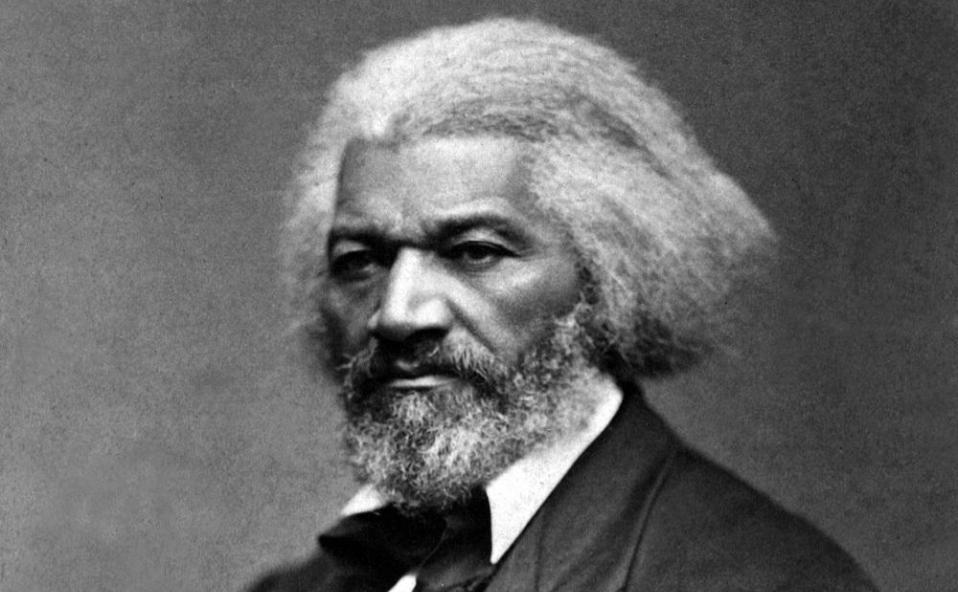

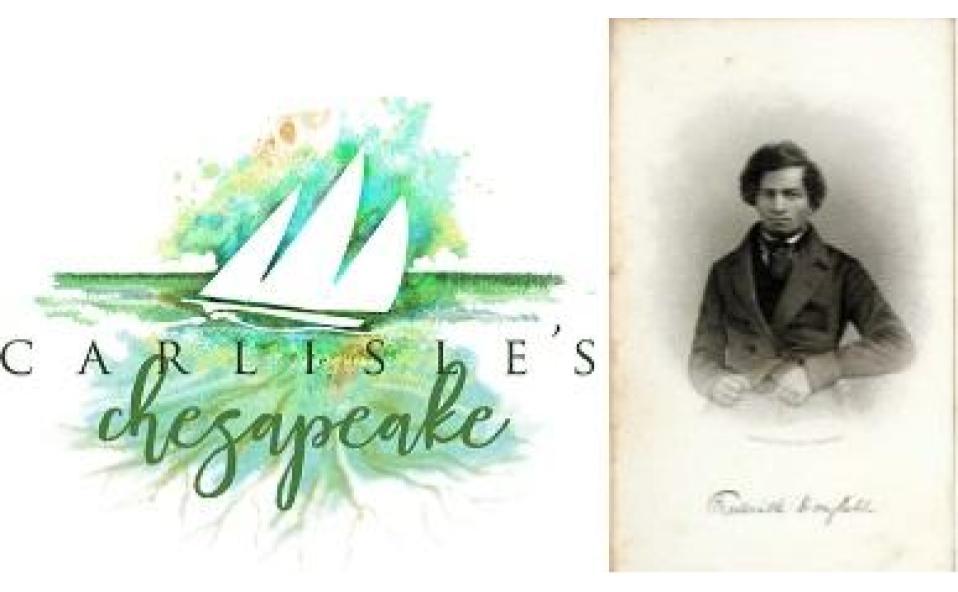
 Carlisle’s Chesapeake announces the podcast series about Maryland-born freed slave Frederick Douglass just dropped at
Carlisle’s Chesapeake announces the podcast series about Maryland-born freed slave Frederick Douglass just dropped at 